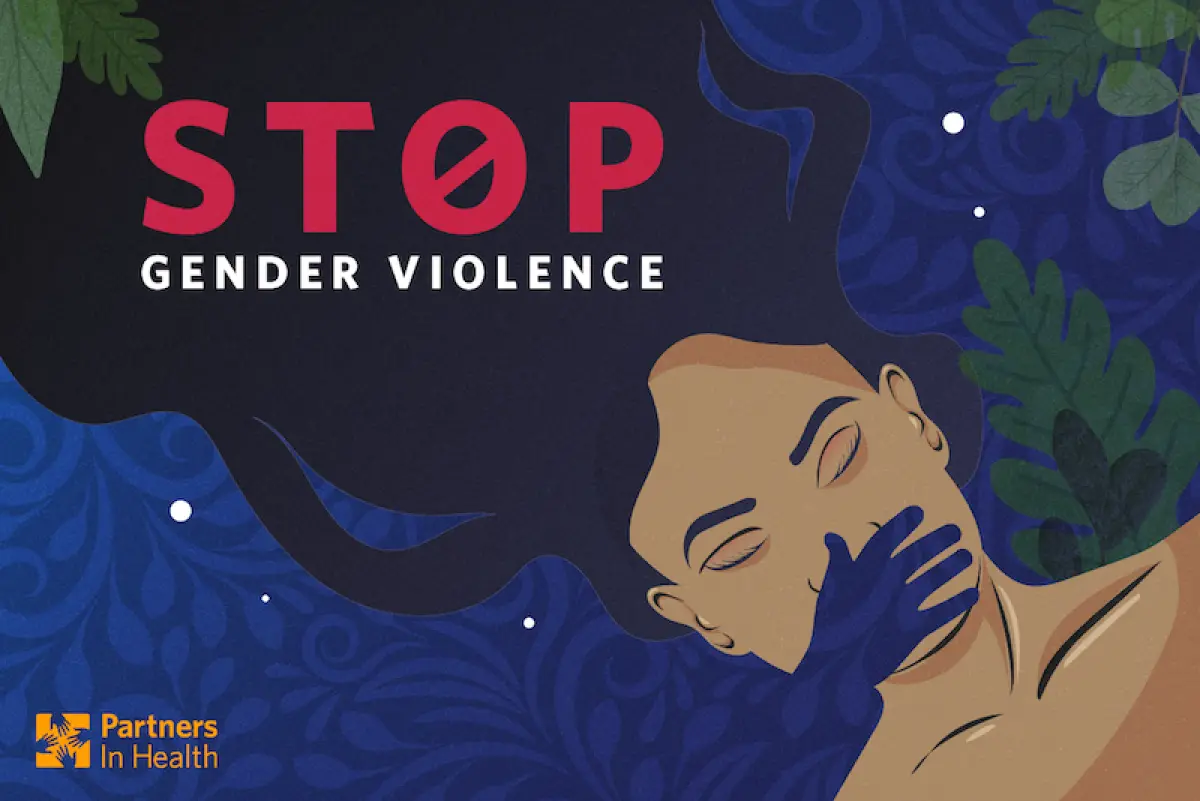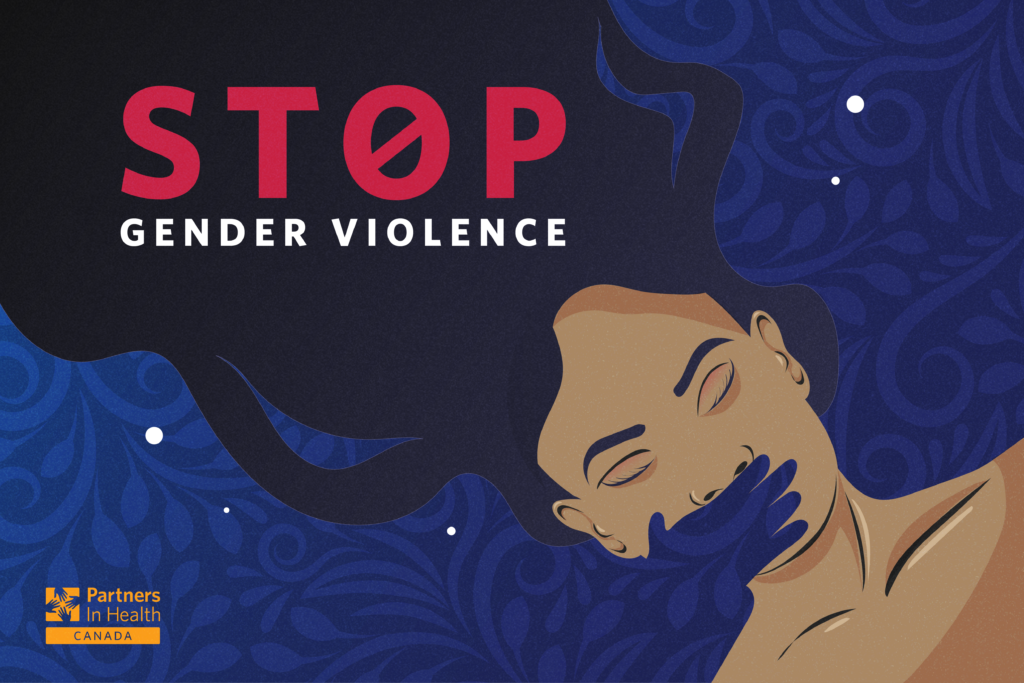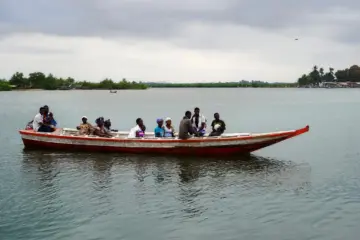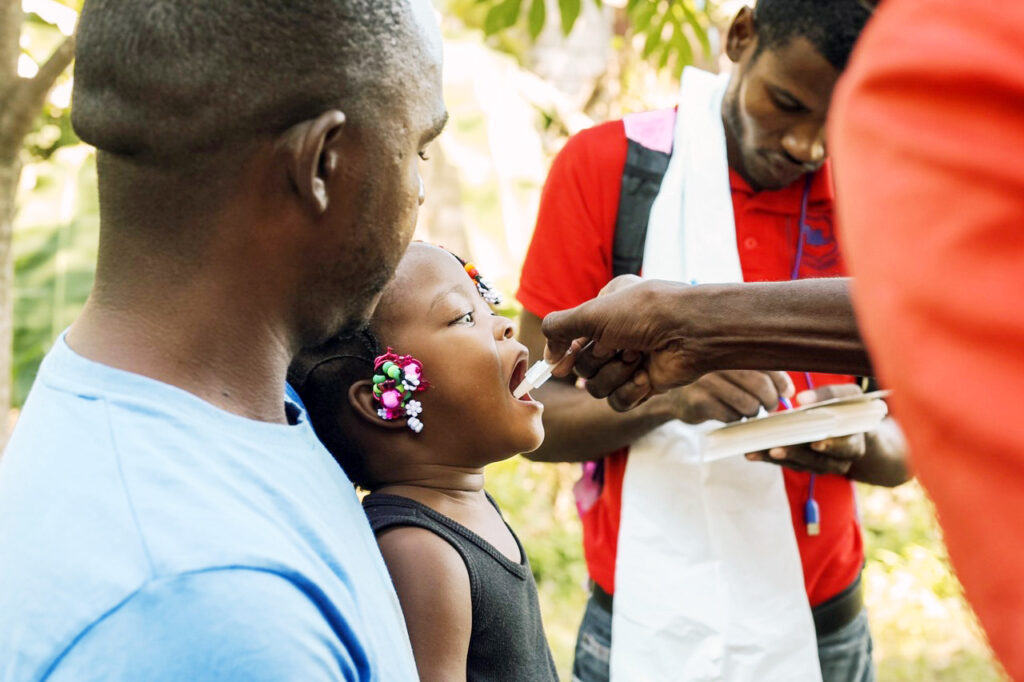Addressing Gender-Based Violence in Haiti

Project helps survivors access heath, counselling, financial support after attacks of violence
Posted on May 23, 2023

*Content warning: The following story mentions incidents of sexual violence and attempted suicide.
The young woman had just turned 17 when she ran out to the supermarket one evening to pick up some candles for her family’s home. On the way back, a group of men surrounded her, pulling her into an abandoned building. They raped her, each taking a turn, while denigrating and taunting her throughout the ordeal. She wasn’t sure if there were eight or nine of them, said Junie Claudie Zamor, a social worker involved in the woman’s case, because “there were too many to count.”
At least one-third of women across the world experience gender-based violence, according to The World Bank. In Haiti, violence against women has been rising, according to news reports and an analysis by PIH staff, driven by pandemic-era restrictions and the recent proliferation of gang attacks, kidnappings, and political and economic chaos. In Haiti’s Central Plateau and Artibonite regions, over the past year alone, 2 in 10 women experienced physical violence; 3 in 10 suffered sexual violence; and 4 in 10 experienced intimate partner violence. That’s likely an undercount.
To try to mitigate such violence, Zanmi Lasante (ZL) as Partners In Health is known in Haiti, and PIH Canada launched a program that seeks to help victims of violence through direct care, counseling, and advocating for systemic change to improve their lives so they can be free of violence.
ZL’s Gender-Based Violence Project started at six of its hospitals and clinics as a pilot program in 2014. High demand from health providers treating survivors, and the Ministry for the Status and Rights of Women, prompted an expansion to an additional five facilities in 2020 and three more in 2021. Overall, the program has reached more than 4,800 survivors of violence.
Between 2020-2022 alone, the project helped more than 1,900 women and 115 men subjected to violence in the Central Plateau and Artibonite regions.The range of support varied widely, but included medical and psychological care and treatment, financial assistance, and referrals to services, from women’s and adolescents’ empowerment groups to security support.
Educating Communities About Violence
Haiti’s male-dominated, patriarchal culture remains powerful, said Eddy Eustache, known as Père Eddy, a Catholic priest and Haitian psychologist who has worked with PIH since 2005 and is now its director of staff wellness and implementation.
“There are still very traditional gender roles in Haiti,” he said. “Men consider themselves the head of the household, so when, for instance, women earn more than the men, they feel diminished, inferior, and sometimes, the way men behave can be destructive.”
That’s why education is critical to halting gender-based violence, he said.
As part of the program, ZL staff provide training for police officers and judges, to educate them about violence and power dynamics and how long-standing systems are stacked against women, making it difficult for them to find justice and healing after an attack. To date, 65 people, including 11 female police officers, have participated in the training. But based on reports from a training session with judges, the men (they are all men) are in dire need of such education.
After one training, for instance, the meeting notes say that the participants had “low levels” of knowledge on gender-based violence and held problematic attitudes. “One notable example is that of judges discussing the drivers of violence,” the notes say. “At the start of the discussion, the judges were clear that they held women responsible for the violence to which they were subjected.”
ZL staff seeks to dispel these widely held, distorted beliefs. In the same session, the staff pushed back on such anti-women attitudes and helped to reframe the judges’ thinking: “Through a series of guided questions, the training facilitators were able to help them shift their understanding of the locus of responsibility for GBV [gender-based violence] from the survivor to the perpetrator.” At the end of the training, the notes say, many participants asked ZL to broaden the project to cover a wider region.
“The project is great at dealing with the immediate- to short-term consequences, but there are longer-term consequences that fall on the broader health system,” said Dr. Pierre-Noel Sergely, clinical director at Cerca-La-Source. Significant social, political, and cultural barriers remain in the way of supporting survivors, he added.
For instance, like the judges, many people in the community still blame the survivors of violence, asking, for example, why they are going out after dark and telling them they should know better.
“Abusers set the tone,” Sergely said. “Although some abusers are sentenced to prison, they often remain in the community because of loopholes in the justice system. As a result, they continue to harass their victims, exacerbating their trauma.”
He said that another unfortunate reality is that abusers sometimes choose to flee Haiti to escape prosecution. Later, they return to the community without being held accountable for their actions. In such cases, victims often find themselves confronted by their abusers. Under the weight of shame, fear and stigma, these victims are often forced to leave the area, while their abusers go unpunished, he said, adding: “This situation highlights the shortcomings of our justice system.”
One example he cited was a case in which a 15-year-old girl had been gang raped. The perpetrators wrote a song about the girl, and, as is common in some neighbourhoods, gathered on the street to sing together. They sang their song about the young woman. “The girl in question ended up leaving the community,” Sergely said.
Threats to the Family
After the 17-year-old’s attack, which occurred in 2021 near the young woman’s home in Cerca-La-Source, the perpetrators forced her to remove her dirty clothes and gave her new ones to put on. Then they pushed her into the street, telling her if she spoke to anyone, they’d kill her family, naming her father and sister. Though she was injured, the social worker said, the woman felt she could not return home. She remained in the street crying until a family friend, who is also a community leader affiliated with ZL, found her and brought her home. The next day, the young woman’s parents took her to the hospital where she was treated and referred to continuing care. Then they went to the police.
Zamor is one of 17 assistant social workers hired as part of the overall GBV project. She said her job includes home visits to women following a violent attack or incident. The first time she went to the 17-year-old’s home, “her psychological state was frayed,” Zamor said. She had tried to die by suicide, swallowing an entire bottle of pills, and though she was scheduled to go to the hospital for follow-up, “she was too afraid to walk on the streets.” So on that first home visit, Zamor brought one of the team’s psychologists along.
In general, the goal of these visits is to listen and provide non-judgmental support as needed, guided by the patient.
“Often victims don’t talk, they cry,” Zamor said. “Our focus is to reassure victims that what happened is not their fault.”
Zamor conducted two subsequent visits to the young woman’s home. In addition to supportive listening and general empathy, Zamor said one of the “care pathways” is to connect victims to a network of women’s associations supported by ZL, and other groups. Zamor also connected the young woman to an adolescent club led by ZL in which members discuss sexual health and education, rights and consent, and issues related to gender-based violence.
Supporting Survivors
The program’s guiding principles include accompaniment and counseling, the right to security and confidentiality, non-discrimination and a right to high-quality care. Social workers and other providers communicate these rights to patients from the outset.
Indeed, the anti-violence program has had an impact, its leaders said. Specifically, between 2020-2022:
- 1,793 gender-based violence patients, or 92%, have seen an assistant social worker;
- 897 patients, or 46%, received a home visit;
- 1,536 patients, or 79%, received financial support for transportation to a hospital, clinic, or police station;
- 1,562 patients, or 80%, were referred for legal services.
And even while stigma around rape and related violence persists and a blame-the-victim attitude remains pervasive, Sergely said ZL’s program is making inroads.
Before the project began, he said, survivors of violence were reluctant to seek care. When they did seek support, they would often go to the police, where they’d end up waiting for many hours, before, eventually, being directed to a hospital or health facility for follow-up care and treatment. He added that survivors would, understandably, often take a bath before going to the police station and inadvertently undermine the ability to document evidence that might be used in criminal proceedings.
“The GBV project aimed to change this behavior,” he said. A key focus of “community sensitization workshops,” which are, essentially, educational gatherings held in health facilities or in neighborhoods where social workers and community members live, has been the need for victims of violence to present to the hospital or health facility before going to a police station. The workshops stress the importance of going to a medical facility within 72 hours after an assault, because it is within this window of time that medication for HIV or sexually transmitted disease exposure or emergency contraception are most effective. Staff has also worked to educate the public about the importance of not bathing or discarding clothes the victim was wearing during an assault.
Long-Lasting Impacts of Violence
After three home visits, meetings with her adolescent club, and other interventions, Zamor said, the young woman became more stable. She appeared to stop crying as frequently, her suicidal behavior ceased, and, through ongoing discussions, she was able to talk about her fears and begin to reintegrate into society, Zamor said. The young woman called members of her adolescent club, “family.”
Still, Zamor said, the attack clearly took a toll, and while several of the perpetrators were arrested, not all of them were prosecuted.
The young woman and her family eventually left Haiti and moved to the Dominican Republic.
With so many young victims, Sergely said, it’s difficult to know the long-term effects of such brutal violence.
“We don’t know what the psychological impacts will be,” he said. “Even if they are able to get back on their feet, we know that there are long-term impacts to this type of trauma.”
Originally published on pih.org



